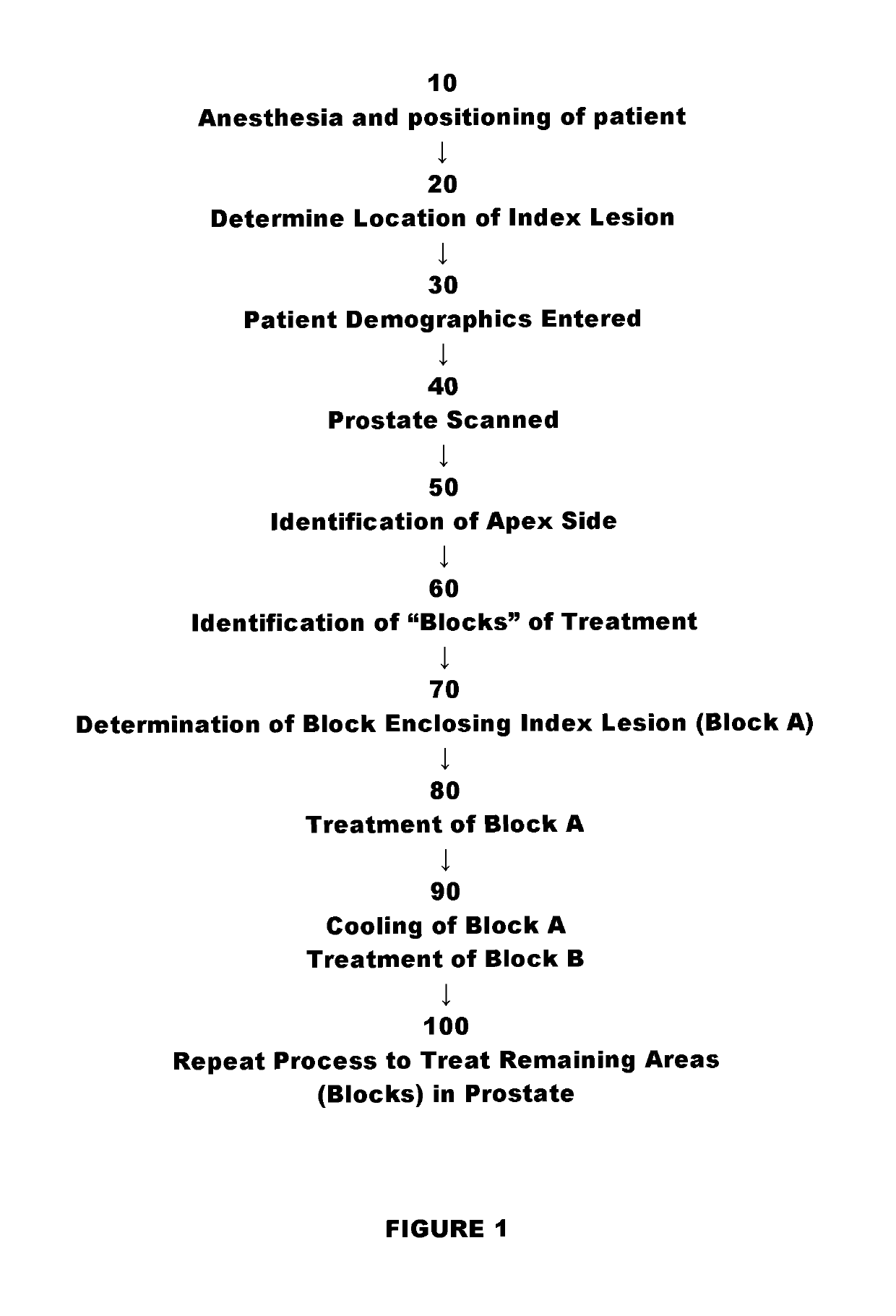Treatment of prostate cancer using enhanced energy application (EEA) in high intensity focused ultrasound (HIFU) procedures
a prostate cancer and enhanced energy technology, applied in the field of prostate cancer treatment, can solve the problems of reducing the ability to dissipate energy, affecting the treatment effect of patients treated with hifu, and delivering a large amount of thermal energy to a confined space, so as to enhance the ability to cure a patient, enhance the effect of survival and enhance energy
- Summary
- Abstract
- Description
- Claims
- Application Information
AI Technical Summary
Benefits of technology
Problems solved by technology
Method used
Image
Examples
example
[0051]The following example is included solely to aid in a more complete understanding of the subject invention. The example does not limit the scope of the invention described herein in any fashion.
Improved Prostate Cancer Outcomes from HIFU Therapy Using MP-MRI Localization, EEA and Optimized Patient Selection Criteria: Early Results from a Pilot Program that Establishes a Much Improved Outcome while Using EEA
Introduction & Objective:
[0052]To evaluate a retrospective patient population of 115 patients treated with HIFU from 2013-2015 in an effort to show unequivocally an ability to cure prostate cancer in an improved and predictable manner based on the use of EEA in a specified patient population. This study is expected to alter the way we treat prostate cancer more effectively and ensure outcomes double digits better than previously known.
Methods:
[0053]While 115 patients were identified, interest is noted in men with prostate cancer who presented with a PSA level of less than or ...
PUM
 Login to View More
Login to View More Abstract
Description
Claims
Application Information
 Login to View More
Login to View More - R&D
- Intellectual Property
- Life Sciences
- Materials
- Tech Scout
- Unparalleled Data Quality
- Higher Quality Content
- 60% Fewer Hallucinations
Browse by: Latest US Patents, China's latest patents, Technical Efficacy Thesaurus, Application Domain, Technology Topic, Popular Technical Reports.
© 2025 PatSnap. All rights reserved.Legal|Privacy policy|Modern Slavery Act Transparency Statement|Sitemap|About US| Contact US: help@patsnap.com


